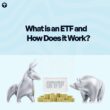In the stock market, many terms and ideas can appear confusing. Among these, “stock split” is one that frequently draws the interest of new investors. When a business declares a stock split, what does it actually mean? To what extent does it impact shareholders? What effects does it have on the company itself? This is possibly the most crucial question.
By the end of this blog post, you’ll have a solid understanding of stock splits and their implications for your investment strategy.

What is a Stock Split?
A stock split occurs when a company divides its existing shares into multiple shares. For example, in a 2-for-1 stock split, each existing share is split into two shares. This results in a higher number of shares outstanding, but each share is priced proportionally lower.
One of the most common misconceptions about stock splits is that they affect the overall value of an investment. In reality, while the number of shares increases, the value of the investment remains the same. For example, if you own 100 shares of a company valued at $100 per share before a 2-for-1 split, you would then own 200 shares valued at $50 each after the split. Your total investment value remains unchanged.
Types of Stock Split
1. Forward Stock Split
This is the most common type of stock split. In a forward split, the company increases the number of outstanding shares by dividing existing stocks into multiple shares. For example, in a 2-for-1 split, shareholders receive two shares for every share they previously held. The split does not change the total market value of the shares, however, it reduces the price per share proportionally.
2. Reverse Stock Split
In contrast to a forward split, a reverse split reduces the number of outstanding shares by consolidating existing shares into fewer shares. For example, in a 1-for-10 reverse split, every ten shares owned by a shareholder would be converted into one share. Reverse splits are often used by companies to increase the share price, particularly if the stock’s price has fallen too low.
Read: Stock Investment Risk Management Strategies
Why Do Companies Split Their Stock?
Companies engage in stock splits for a variety of reasons, but the primary goal is to make the stock more affordable and accessible to a wider range of investors.
By splitting the stock, a company can increase its liquidity and attract more buyers, which can drive up the price of the stock in the long run. Additionally, stock splits can help to increase the trading volume of the stock and make it easier for investors to trade the shares.
Also, in some cases, companies may engage in stock splits to keep the share price within a certain range or to boost employee morale. Overall, the goal is to create a positive impact on the company’s valuation.
FAQ
How Does the Market Typically React to Stock Splits?
While there is no guarantee, stock splits often lead to short-term price increases as investors perceive the lower share price as more attractive. Increased trading volume and positive sentiment can also accompany stock splits, although long-term performance will depend on various factors.

Conclusion
stock splits play a significant role in the financial markets, with far-reaching implications for investors. While stock splits may not actually change a company’s value, they can have important implications for market dynamics.
Stock splits come in various forms, including the common 2-for-1 split, as well as 3-for-1 or even reverse splits. A 2-for-1 split doubles the number of outstanding shares while halving the price per share. Similarly, a 3-for-1 split triples the number of shares while reducing the price per share to one-third of its original value. Reverse splits, on the other hand, consolidate shares, often used by companies to increase share price.
So, by understanding the mechanics of stock splits, the reasons, and their effects, you can make informed decisions regarding your investment portfolios. As always, it’s essential to conduct thorough research and consider your investment goals before making any decisions in the stock market.
Download the Trove app to start an easy investment journey!







